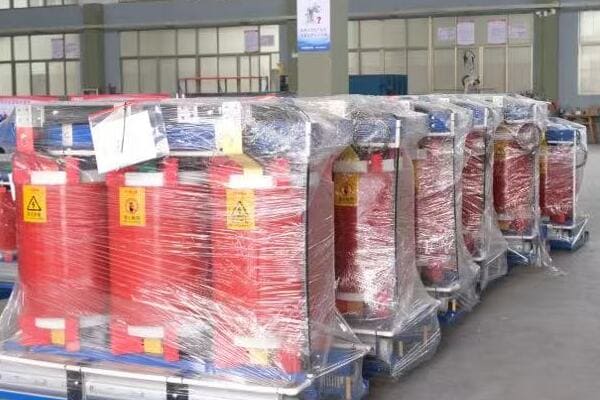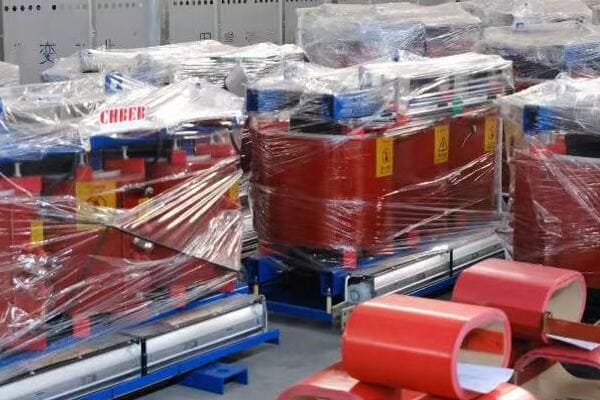How to Choose Between Power and Distribution Transformers for Industrial or Utility Applications?
Are you struggling to decide between a power transformer and a distribution transformer for your project? You’re not alone. Many engineers and project managers find this choice challenging, especially when dealing with complex industrial or utility applications. But what if you could make this decision with confidence, knowing you’ve considered all the crucial factors?
Choosing between power and distribution transformers depends on voltage level, load profile, and installation context. Power transformers suit high-voltage transmission, while distribution units serve end-users. This guide compares both types and helps engineers select the right transformer for industrial or utility applications.
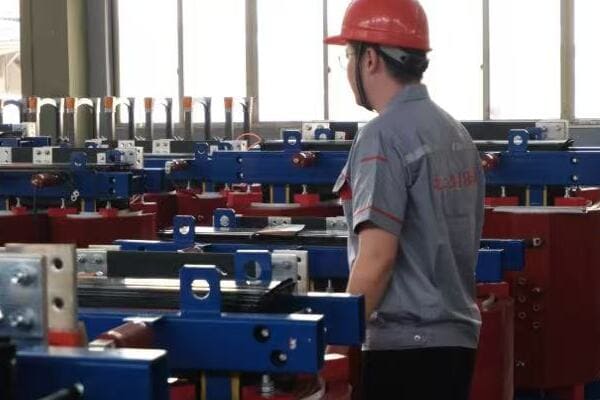
In this comprehensive guide, I’ll walk you through the key differences between power and distribution transformers, provide real-world examples, and offer a practical checklist to help you make the right choice for your specific needs. Whether you’re working on an industrial facility or a utility project, this article will equip you with the knowledge to select the optimal transformer solution.
Power vs Distribution Transformers: Quick Comparison?
Are you finding it difficult to quickly differentiate between power and distribution transformers? You’re not alone. Many professionals in the field struggle to articulate these differences concisely. But what if you had a clear, side-by-side comparison to reference at a glance?
Power transformers handle high voltages and large capacities in transmission systems, while distribution transformers manage lower voltages for end-user supply. Power units typically operate above 69 kV with capacities over 10 MVA, whereas distribution transformers work below 36 kV, usually up to 3000 kVA. Their design, efficiency, and application contexts differ significantly.
Detailed Comparison Table
Let’s break down the key differences in a comprehensive table:
| Feature | Power Transformer | Distribution Transformer |
|---|---|---|
| Voltage Range | 69 kV – 765 kV | 480 V – 36 kV |
| Capacity | 10 MVA – 1000 MVA | 5 kVA – 3000 kVA |
| Primary Use | Transmission systems | End-user power supply |
| Efficiency | Highest at full load | Optimized for variable loads |
| Size | Large, often custom-built | Smaller, more standardized |
| Cooling System | ONAN, ONAF, OFAF | AN, ONAN |
| Load Profile | Constant, high load | Fluctuating loads |
| Location | Substations | Pole-mounted, pad-mounted, or indoor |
| Maintenance | Complex, scheduled | Simpler, less frequent |
| Cost | High | Lower |
Key Insights from the Comparison
-
Voltage and Capacity:
The most obvious difference lies in the voltage and capacity ranges. Power transformers handle the heavy lifting in transmission systems, while distribution transformers manage the final step-down for consumer use. -
Efficiency and Load Profiles:
Power transformers are optimized for constant, high loads, typical in transmission systems. Distribution transformers, however, are designed to maintain efficiency under varying load conditions, which is common in end-user applications. -
Size and Installation:
Power transformers are generally much larger and require specialized installation in substations. Distribution transformers are more compact and versatile in their installation options. -
Cooling and Maintenance:
The cooling systems for power transformers are often more complex, reflecting their higher capacity and constant operation. This also translates to more intensive maintenance requirements.
In my experience, understanding these differences is crucial for proper system design and equipment selection. I recall a project where a client initially requested a power transformer for what was clearly a distribution application. By explaining these differences, we were able to guide them towards a more suitable and cost-effective solution using a distribution transformer.
This comparison serves as a quick reference guide, but remember that real-world applications often involve nuances that may not fit neatly into these categories. In the following sections, we’ll explore when to use each type of transformer and the key factors to consider in your selection process.
When to Use Power Transformers in Industrial or Utility Settings?
Are you wondering if your project requires a power transformer? This decision can significantly impact your system’s efficiency, reliability, and cost. But how do you know when a power transformer is the right choice for your industrial or utility application?
Power transformers are essential in high-voltage transmission systems and large-scale industrial settings. They’re ideal for applications requiring voltages above 69 kV and capacities exceeding 10 MVA. Use power transformers in utility substations, power plants, and heavy industries like steel mills or large chemical plants where high power demands and voltage step-up or step-down are crucial.
Key Scenarios for Power Transformer Use
Let’s explore the primary situations where power transformers are the optimal choice:
- Utility Transmission Systems
- Power Generation Plants
- Large Industrial Facilities
- Grid Interconnections
- Renewable Energy Integration
Utility Transmission Systems
Power transformers are the backbone of electricity transmission:
- Step-up transformers at generating stations increase voltage for long-distance transmission
- Step-down transformers at substations reduce voltage for further distribution
I once worked on a project upgrading a major transmission substation. We installed a 500 MVA, 345 kV/138 kV power transformer. This single unit was crucial in efficiently stepping down voltage from the main transmission line to the sub-transmission system, showcasing the critical role of power transformers in utility networks.
Power Generation Plants
In power plants, power transformers are essential:
- They step up generator voltage (typically 15-25 kV) to transmission levels (69 kV and above)
- Handle the full output capacity of large generators
During a recent combined cycle power plant project, we used a 300 MVA power transformer to step up the voltage from the generator’s 18 kV to the grid’s 230 kV. This transformation was vital for efficiently integrating the plant’s output into the transmission system.
Large Industrial Facilities
Some industries require power transformer-level capacity:
- Steel mills, large chemical plants, and other energy-intensive industries
- Often connected directly to high-voltage transmission lines
I recall a project for a major aluminum smelter where we installed multiple 100 MVA power transformers. These units were necessary to handle the enormous power demands and to step down the incoming 230 kV to the plant’s operating voltage of 33 kV.
Grid Interconnections
Power transformers play a crucial role in connecting different grid systems:
- They manage voltage differences between interconnected grids
- Essential for regional and international power exchanges
Renewable Energy Integration
Large-scale renewable projects often require power transformers:
- Solar farms and wind parks use them to step up voltage for grid connection
- Offshore wind farms use specialized power transformers designed for marine environments
Here’s a quick reference table for power transformer applications:
| Application | Typical Voltage Range | Common Capacities |
|---|---|---|
| Utility Transmission | 138 kV – 765 kV | 100 MVA – 1000 MVA |
| Power Generation | 69 kV – 345 kV | 50 MVA – 500 MVA |
| Large Industry | 69 kV – 230 kV | 30 MVA – 200 MVA |
| Grid Interconnection | 230 kV – 500 kV | 200 MVA – 1000 MVA |
| Renewable Integration | 69 kV – 345 kV | 50 MVA – 300 MVA |
In my experience, the decision to use a power transformer often comes down to the scale of power handling required. If your project involves high voltages, large power capacities, or serves as a critical node in a broader power system, a power transformer is likely the appropriate choice. However, it’s crucial to conduct a thorough analysis of your specific needs, considering factors like future expansion plans and system reliability requirements.
Remember, while power transformers offer unparalleled capacity and efficiency at high voltages, they also come with significant costs and complex installation requirements. Always consult with experienced engineers and consider the long-term implications of your choice in the context of your overall power system design.
When Distribution Transformers Are the Better Fit?
Are you unsure whether your project needs a distribution transformer instead of a power transformer? This decision can significantly impact your project’s cost, efficiency, and overall success. But how do you determine if a distribution transformer is the right choice for your application?
Distribution transformers are ideal for lower voltage applications, typically below 36 kV, with capacities up to 3000 kVA. They’re best suited for final voltage step-down in power distribution networks, serving residential areas, commercial buildings, and smaller industrial facilities. Choose distribution transformers when you need to supply end-users directly or for localized power distribution within a facility.
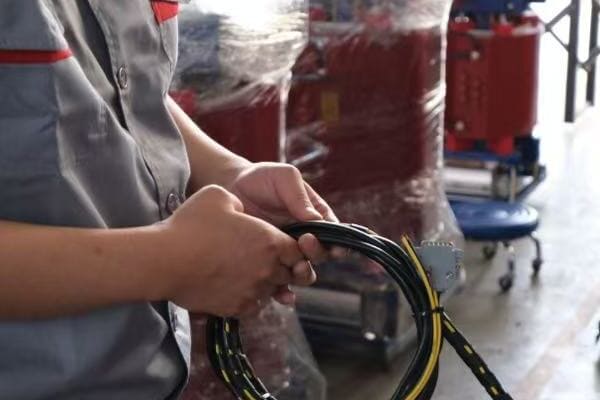
Key Scenarios for Distribution Transformer Use
Let’s explore the primary situations where distribution transformers are the optimal choice:
- Residential Power Supply
- Commercial Buildings
- Light to Medium Industrial Applications
- Urban Power Distribution
- Renewable Energy Systems (Small Scale)
Residential Power Supply
Distribution transformers are crucial in residential areas:
- They step down medium voltage (typically 11 kV or 33 kV) to household voltage (400V/230V)
- Often seen as pole-mounted or pad-mounted units in neighborhoods
I once worked on a suburban development project where we installed multiple 500 kVA pad-mounted distribution transformers. These units efficiently supplied power to clusters of homes, balancing capacity with the fluctuating demands typical of residential areas.
Commercial Buildings
For office buildings, shopping centers, and other commercial spaces:
- Handle the diverse load profiles of commercial environments
- Often installed in basements or dedicated electrical rooms
During a recent shopping mall renovation, we replaced old transformers with modern, energy-efficient 2000 kVA dry-type distribution transformers. These units not only improved power quality but also reduced energy losses, showcasing the importance of choosing the right distribution transformer for commercial applications.
Light to Medium Industrial Applications
Many industrial facilities are well-served by distribution transformers:
- Suitable for factories, workshops, and processing plants with moderate power needs
- Can handle motor loads and variable frequency drives common in industrial settings
I recall a project for a food processing plant where we used several 1500 kVA oil-filled distribution transformers. These units provided the necessary power for production equipment while offering the flexibility to handle varying loads throughout the day.
Urban Power Distribution
In cities, distribution transformers are essential for local power delivery:
- Used in network transformers for underground distribution systems
- Crucial for maintaining reliable power in densely populated areas
Renewable Energy Systems (Small Scale)
Smaller renewable energy projects often use distribution transformers:
- Solar installations on commercial rooftops
- Small wind turbines for local power generation
Here’s a quick reference table for distribution transformer applications:
| Application | Typical Voltage Range | Common Capacities |
|---|---|---|
| Residential | 11 kV/400V – 33 kV/400V | 25 kVA – 500 kVA |
| Commercial | 11 kV/400V – 33 kV/400V | 500 kVA – 2500 kVA |
| Light Industrial | 11 kV/400V – 33 kV/400V | 750 kVA – 3000 kVA |
| Urban Distribution | 11 kV/400V – 33 kV/400V | 500 kVA – 2000 kVA |
| Small Renewables | 400V – 33 kV | 50 kVA – 1000 kVA |
In my experience, the decision to use a distribution transformer often comes down to the scale and nature of the power distribution required. If your project involves supplying power directly to end-users, managing diverse load profiles, or distributing power within a localized area, a distribution transformer is likely the appropriate choice.
Distribution transformers offer several advantages in these scenarios:
- More compact and easier to install than power transformers
- Better suited for handling fluctuating loads common in end-user applications
- Often more cost-effective for lower voltage and capacity needs
- Available in a variety of types (dry-type, oil-filled, pad-mounted, pole-mounted) to suit different installation requirements
Remember, while distribution transformers are versatile and widely used, it’s crucial to select the right capacity and type for your specific application. Factors like load growth, environmental conditions, and maintenance requirements should all be considered in your decision-making process. Always consult with experienced electrical engineers to ensure your choice aligns with both current needs and future expansion plans.
5 Key Factors to Guide Your Selection?
Are you feeling overwhelmed by the numerous considerations in choosing between power and distribution transformers? You’re not alone. Many engineers and project managers struggle with this decision, given the long-term implications it can have on system performance and cost. But what if you had a clear set of key factors to guide your selection process?
Selecting between power and distribution transformers involves considering voltage level, load capacity, efficiency requirements, installation constraints, and long-term maintenance needs. These factors help determine whether your application requires the high-voltage, high-capacity capabilities of a power transformer or the more localized, end-user-focused features of a distribution transformer.

Essential Factors for Transformer Selection
Let’s explore the five critical factors that should guide your decision:
- Voltage Level Required
- Load Capacity and Variability
- Efficiency Expectations
- Installation Constraints
- Maintenance and Budget Considerations
1. Voltage Level Required
The voltage level is often the primary determining factor:
- Power Transformers: Typically for voltages above 69 kV
- Distribution Transformers: Usually below 36 kV
I once consulted on a project where the client initially requested a power transformer for a 33 kV application. After analyzing their needs, we determined that a robust distribution transformer was more appropriate and cost-effective for their voltage level.
2. Load Capacity and Variability
Consider both the total capacity needed and how the load might fluctuate:
- Power Transformers: Suit constant, high-load applications
- Distribution Transformers: Better for variable loads typical in end-user scenarios
In a recent industrial park development, we chose multiple distribution transformers over a single large power transformer. This decision provided better load management flexibility as different businesses moved in and out of the park.
3. Efficiency Expectations
Efficiency requirements can vary based on application and regulatory standards:
- Power Transformers: Highest efficiency at full load
- Distribution Transformers: Optimized for efficiency across varying load conditions
4. Installation Constraints
Physical limitations of the installation site play a crucial role:
- Power Transformers: Require large, secure substations
- Distribution Transformers: More flexible, can be pole-mounted, pad-mounted, or installed indoors
During an urban renewal project, space constraints led us to choose compact pad-mounted distribution transformers instead of a larger power transformer, allowing for more efficient use of limited real estate.
5. Maintenance and Budget Considerations
Long-term operational costs and maintenance requirements are critical:
- Power Transformers: Higher initial cost, complex maintenance
- Distribution Transformers: Lower cost, simpler maintenance
Here’s a decision matrix to help guide your choice:
| Factor | Choose Power Transformer If | Choose Distribution Transformer If |
|---|---|---|
| Voltage | ≥ 69 kV | < 36 kV |
| Load | High, constant | Variable, lower capacity |
| Efficiency | Critical at full load | Important across load range |
| Installation | Substation space available | Limited space, various mounting options |
| Maintenance | Specialized team available | Simpler, less frequent maintenance needed |
In my experience, balancing these factors is crucial for making the right choice. For instance, in a large data center project, despite the high power demands, we opted for multiple large distribution transformers instead of a single power transformer. This decision was driven by the need for redundancy, the variable load profile of the facility, and the ability to perform maintenance without complete shutdown.
Remember, these factors should not be considered in isolation. The interplay between them often leads to the optimal solution. For example, a slightly oversized distribution transformer might be preferable to a small power transformer if it offers better efficiency across expected load variations and easier maintenance.
Always consider your project’s specific context, including future expansion plans, local regulations, and environmental factors. Consulting with experienced electrical engineers and transformer manufacturers can provide valuable insights tailored to your unique situation. By carefully weighing these five key factors, you’ll be well-equipped to make an informed decision that ensures the best performance, reliability, and cost-effectiveness for your power system.
Common Mistakes to Avoid in Transformer Selection?
Are you worried about making a costly error in choosing between power and distribution transformers? You’re right to be cautious. Many projects have been derailed by incorrect transformer selection, leading to inefficiencies, increased costs, and even system failures. But what are the most common pitfalls, and how can you avoid them?
Common mistakes in transformer selection include underestimating future load growth, neglecting efficiency considerations, overlooking installation constraints, ignoring environmental factors, and focusing solely on initial costs. Avoiding these errors ensures optimal performance, longevity, and cost-effectiveness of your power system, whether you choose a power or distribution transformer.
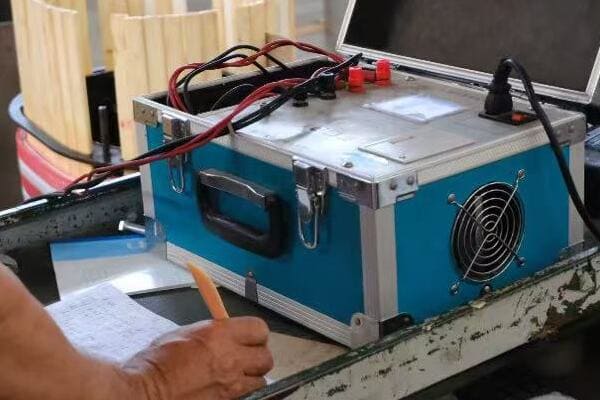
Key Mistakes to Avoid in Transformer Selection
Let’s explore the most common errors and how to prevent them:
- Underestimating Future Load Requirements
- Neglecting Efficiency Considerations
- Overlooking Installation and Space Constraints
- Ignoring Environmental Factors
- Focusing Solely on Initial Costs
1. Underestimating Future Load Requirements
This is perhaps the most critical mistake:
- Failing to account for potential load growth can lead to premature transformer replacement
- Overestimating can result in unnecessary expenses and inefficiencies
I once consulted on a project where a manufacturing plant chose a transformer based solely on their current needs. Within two years, they had to replace it due to rapid expansion, incurring significant costs and downtime. Always factor in realistic growth projections when sizing your transformer.
2. Neglecting Efficiency Considerations
Efficiency impacts long-term operational costs:
- Choosing a less efficient transformer to save on upfront costs often leads to higher energy bills
- Failing to consider part-load efficiency in applications with variable loads
In a recent data center project, we opted for a slightly more expensive but highly efficient transformer. The energy savings over just five years more than justified the initial cost difference.
3. Overlooking Installation and Space Constraints
Physical limitations can derail your transformer choice:
- Failing to consider access for installation and maintenance
- Not accounting for weight limitations or required clearances
I recall a renovation project where the selected transformer couldn’t fit through the building’s access points. This oversight led to costly modifications and delays. Always conduct a thorough site survey before finalizing your transformer selection.
4. Ignoring Environmental Factors
Environmental conditions significantly impact transformer performance and lifespan:
- Neglecting to consider ambient temperature, humidity, or altitude
- Failing to account for corrosive or polluted environments
During a coastal industrial project, we initially overlooked the corrosive effects of salt air. This led to premature degradation of the transformer enclosure. We resolved the issue by specifying a transformer with enhanced corrosion protection, but it was a costly lesson.
5. Focusing Solely on Initial Costs
The cheapest option upfront isn’t always the most cost-effective:
- Neglecting to calculate Total Cost of Ownership (TCO)
- Failing to consider maintenance costs and potential downtime
Here’s a comparison table to illustrate the impact of these mistakes:
| Mistake | Potential Consequences | Prevention Strategy |
|---|---|---|
| Underestimating Load | Premature replacement, system overload | Conduct thorough load analysis, include growth projections |
| Neglecting Efficiency | Higher operational costs | Calculate long-term energy costs, consider part-load efficiency |
| Overlooking Space Constraints | Installation delays, additional costs | Perform detailed site survey, consider future maintenance access |
| Ignoring Environment | Reduced lifespan, increased maintenance | Assess environmental conditions, specify appropriate protection |
| Focus on Initial Cost | Higher TCO, potential reliability issues | Calculate TCO, consider long-term benefits of quality equipment |
In my experience, avoiding these mistakes often comes down to thorough planning and a holistic approach to transformer selection. I always advise clients to:
- Conduct a comprehensive needs assessment, including future projections
- Calculate Total Cost of Ownership over the expected life of the transformer
- Perform a detailed site survey and environmental assessment
- Consult with experienced engineers and reputable manufacturers
- Consider the long-term implications of their choice on system reliability and efficiency
Remember, the goal is not just to select a transformer that meets your current needs, but one that will serve your system efficiently and reliably for decades to come. By avoiding these common mistakes, you’ll be well on your way to making an informed decision that balances performance, cost, and long-term reliability, whether you choose a power or distribution transformer.
Real-World Examples: Industrial vs Utility Project Use Cases?
Are you struggling to visualize how power and distribution transformers fit into real-world scenarios? You’re not alone. Many engineers and project managers find it challenging to translate theoretical knowledge into practical applications. But what if you had concrete examples to illustrate how these transformers are used in actual industrial and utility projects?
Real-world applications demonstrate clear distinctions between power and distribution transformer use. In industrial settings, power transformers often serve large facilities like steel mills, while distribution transformers are common in diverse manufacturing environments. Utility projects typically use power transformers in substations and distribution transformers for local power delivery. These examples highlight the importance of proper transformer selection based on specific project requirements.

Case Studies: Industrial and Utility Transformer Applications
Let’s explore real-world examples of transformer applications in both industrial and utility settings:
- Steel Mill (Industrial – Power Transformer)
- Automotive Manufacturing Plant (Industrial – Distribution Transformer)
- Grid Substation (Utility – Power Transformer)
- Urban Power Distribution (Utility – Distribution Transformer)
1. Steel Mill (Industrial – Power Transformer)
Project Overview:
- Large-scale steel production facility
- High power demand for electric arc furnaces
Transformer Solution:
- Multiple 100 MVA, 230kV/33kV power transformers
- Oil-immersed with forced oil and air cooling (OFAF)
I once worked on a project for a major steel mill where we installed three 100 MVA power transformers. These units were crucial in stepping down the incoming 230 kV transmission voltage to the 33 kV used within the plant. The high capacity was necessary to handle the enormous power demands of the electric arc furnaces, which could draw up to 80 MW during peak operation.
Key Considerations:
- High continuous load capacity
- Ability to handle frequent load fluctuations
- Robust design to withstand harsh industrial environment
2. Automotive Manufacturing Plant (Industrial – Distribution Transformer)
Project Overview:
- Modern car assembly facility
- Diverse power needs for assembly lines, robotic systems, and facility operations
Transformer Solution:
- Multiple 2500 kVA, 33kV/400V distribution transformers
- Dry-type with forced air cooling (AF)
In a recent automotive plant project, we implemented a network of 2500 kVA distribution transformers throughout the facility. These units were strategically placed to serve different production areas, providing the necessary voltage step-down from the plant’s 33 kV internal distribution to the 400 V used by most equipment.
Key Considerations:
- Flexibility to handle varying loads across different production shifts
- Compact design for installation within the factory
- Low maintenance requirements to minimize production disruptions
3. Grid Substation (Utility – Power Transformer)
Project Overview:
- Major transmission substation upgrade
- Part of a grid modernization initiative
Transformer Solution:
- 500 MVA, 345kV/138kV power transformer
- Oil-immersed with forced oil and forced air cooling (OFAF)
I was involved in a significant grid upgrade project where we installed a 500 MVA power transformer at a key substation. This transformer played a critical role in stepping down voltage from the 345 kV main transmission line to the 138 kV sub-transmission system, effectively bridging the gap between long-distance power transmission and regional distribution.
Key Considerations:
- Ultra-high reliability requirements
- Advanced monitoring and control systems integration
- Designed for decades of continuous operation
4. Urban Power Distribution (Utility – Distribution Transformer)
Project Overview:
- City-wide power distribution network upgrade
- Focus on improving reliability and capacity in a growing urban area
Transformer Solution:
- Numerous 1000 kVA, 11kV/400V distribution transformers
- Mix of pad-mounted and vault-type installations
During a comprehensive urban power infrastructure modernization, we deployed hundreds of 1000 kVA distribution transformers across the city. These units were the final step in bringing power from the medium-voltage distribution lines to end-users, providing the necessary voltage transformation for residential and commercial customers.
Key Considerations:
- Compact design for urban installation constraints
- Low noise operation for residential areas
- Smart grid compatibility for future network enhancements
Here’s a comparison table summarizing these real-world applications:
| Project Type | Transformer Type | Capacity | Voltage | Key Features |
|---|---|---|---|---|
| Steel Mill | Power | 100 MVA | 230kV/33kV | High capacity, load fluctuation handling |
| Auto Plant | Distribution | 2500 kVA | 33kV/400V | Flexible, compact, low maintenance |
| Grid Substation | Power | 500 MVA | 345kV/138kV | Ultra-reliable, advanced monitoring |
| Urban Distribution | Distribution | 1000 kVA | 11kV/400V | Compact, low noise, smart grid ready |
These real-world examples illustrate the distinct applications of power and distribution transformers in industrial and utility settings. Power transformers excel in high-voltage, high-capacity scenarios typical in large industrial facilities and utility substations. Distribution transformers shine in their versatility and ability to handle the final voltage step-down in various settings, from factories to urban neighborhoods.
In my experience, understanding these practical applications is crucial for making informed decisions in transformer selection. Each project has unique requirements, and the right choice depends on a thorough analysis of power needs, environmental factors, and long-term operational considerations. Whether you’re working on an industrial facility or a utility project, these examples provide a solid foundation for understanding how to apply transformer technology effectively in real-world scenarios.
Final Checklist – Which Transformer Is Right for Your Project?
Are you ready to make the final decision on whether to use a power or distribution transformer for your project? This choice can be daunting, given the long-term implications for your system’s performance and cost-effectiveness. But what if you had a comprehensive checklist to ensure you’ve considered all crucial factors before making your decision?
Selecting the right transformer involves assessing voltage requirements, load capacity, efficiency needs, installation constraints, and long-term operational factors. This final checklist guides you through key considerations for both power and distribution transformers, helping ensure your choice aligns with your project’s specific needs, whether in industrial or utility applications.
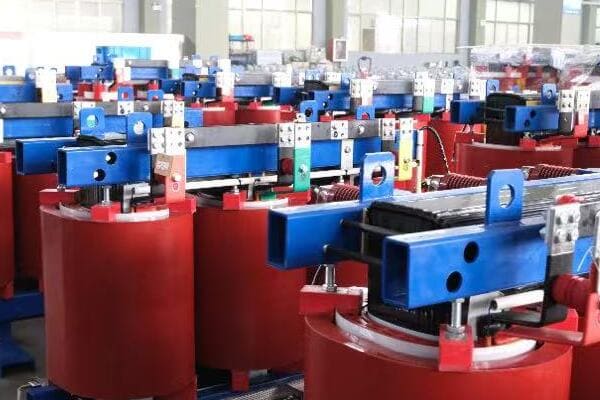
Comprehensive Transformer Selection Checklist
Use this checklist to guide your final decision between power and distribution transformers:
-
Voltage Requirements
- [ ] Primary voltage level: __ kV
- [ ] Secondary voltage level: __ kV
- [ ] Does the voltage range fall within power transformer territory (≥69 kV)? Yes/No
-
Load Capacity
- [ ] Maximum load requirement: __ MVA
- [ ] Expected load growth over next 10 years: __ %
- [ ] Is the capacity beyond typical distribution transformer range (>10 MVA)? Yes/No
-
Load Profile
- [ ] Constant high load or variable load?
- [ ] Frequency of peak loads: __
- [ ] Does the load profile match power transformer characteristics (constant high load)? Yes/No
-
Efficiency Requirements
- [ ] Minimum efficiency at full load: __ %
- [ ] Importance of part-load efficiency: High/Medium/Low
- [ ] Are there specific energy efficiency regulations to meet? Yes/No
-
Installation Environment
- [ ] Indoor or outdoor installation?
- [ ] Available space dimensions: __ m x __ m
- [ ] Any weight restrictions? Yes/No
- [ ] Ambient temperature range: __ °C to __ °C
- [ ] Special environmental considerations (e.g., corrosive, high altitude): __
-
Maintenance and Operational Factors
- [ ] Availability of specialized maintenance personnel: Yes/No
- [ ] Acceptable frequency of maintenance: __
- [ ] Budget for long-term maintenance: $__
- [ ] Expected lifespan of the installation: __ years
-
System Integration
- [ ] Compatibility with existing infrastructure: Yes/No
- [ ] Smart grid integration requirements: Yes/No
- [ ] Special protection or monitoring systems needed: Yes/No
-
Regulatory and Safety Considerations
- [ ] Applicable local or industry-specific regulations: __
- [ ] Fire safety requirements: __
- [ ] Noise level restrictions: __ dB
-
Cost Considerations
- [ ] Initial budget for transformer: $__
- [ ] Estimated annual operational costs: $__
- [ ] Expected Return on Investment period: __ years
-
Future-Proofing
- [ ] Potential for system expansion: Yes/No
- [ ] Anticipated changes in power requirements: __
- [ ] Flexibility needed for future modifications: High/Medium/Low
Final Decision:
Based on the above considerations, the recommended transformer type is:
[ ] Power Transformer
[ ] Distribution Transformer
Justification for selection:
In my experience, going through this checklist systematically can reveal important factors that might otherwise be overlooked. I recall a project where initially a power transformer seemed necessary due to high load requirements. However, after completing this checklist, we realized that the variable load profile and space constraints made a set of high-capacity distribution transformers a more suitable choice.
Remember, while this checklist is comprehensive, it’s not exhaustive. Each project may have unique considerations. I always recommend consulting with experienced electrical engineers and transformer manufacturers to validate your decision. They can provide valuable insights based on similar projects and the latest technological advancements.
By thoroughly completing this checklist, you’ll be well-equipped to make an informed decision that ensures your transformer choice aligns perfectly with your project’s needs, whether you’re working on an industrial facility or a utility project. This careful consideration will contribute to the long-term success, efficiency, and reliability of your power system.
Conclusion
Choosing between power and distribution transformers requires careful consideration of voltage levels, load requirements, efficiency needs, and installation constraints. By understanding the unique characteristics of each type and avoiding common selection mistakes, you can ensure optimal performance and cost-effectiveness for your industrial or utility project. Always consider long-term factors and consult experts for the best results.
Remember, at chbeb-ele, we’re not just sharing information – we’re empowering you to be part of the solution in creating a secure, clean, and efficient energy future. Let’s continue this journey together.
Recent Post
Quick Message
Request A free quote
We'd like to work with you
- +86 15558785111
- chbebgroup@chbebpower.com
- +86 15558785111
What We Do
CHINA BEI ER BIAN (CHBEB) GROUP, with 218 million in registered capital, originated from Beijing Beierbian Transformer Group. Headquartered in Beijing for R&D, it operates major production bases in Nanjing and Yueqing, producing high-quality products.
Latest Post
Latest Product
Contact Us
- +86 15558785111
- chbebgroup@chbebpower.com
- +86 15558785111
BeiJing
No 3,RongJing East Road,BeiJing Economic Technological Development Area,BeiJing,China
JiangSu
No 7️Xiangfeng Road,Jiangning,NanJing,JiangSu,China
WenZhou
No.211, Wei 16 Road, Industrial Zone, Yueqing, Wenzhou, Zhejiang, China.
XiangYang Industrial Zone ,YueQing,WenZhou,ZheJiang,China

